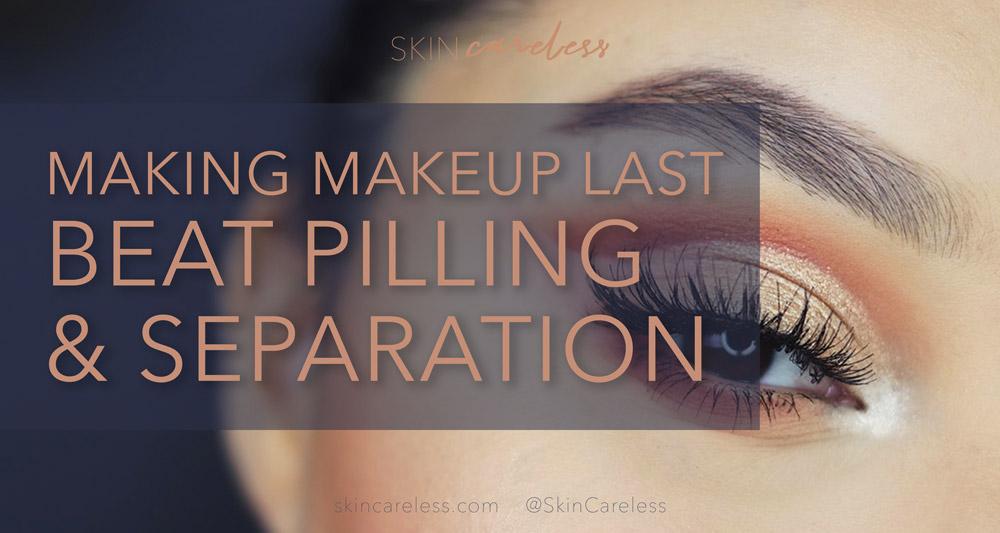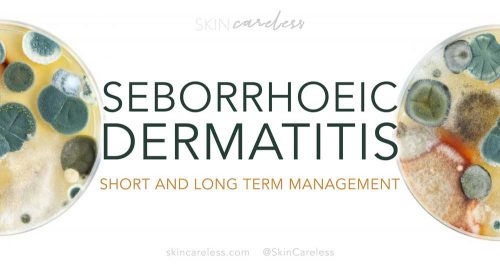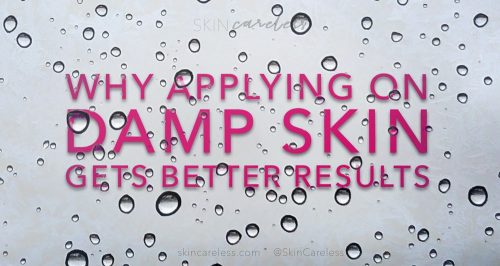What is product pilling?
Picture this: you’re running late, trying to slap on some foundation before you head out the door, when suddenly the worst happens – you feel your skin start to ball up under your fingers. With each swipe, the product seems to rub off more than it goes on. You’re left looking like you’ve dived into the lint filter from the clothes dryer and wondering where you went wrong.
This phenomenon is called ‘pilling’, and it’s where the products you apply on your skin ball up and stick to one another rather than your face, like little eraser shavings. And it’s super annoying. Chances are, if you’re invested in skin care you’ve also dabbled in makeup. I’d bet any money that you’ve experienced this exact problem.
What is product separation?
The annoyance of pilling is rivalled only by separation – when halfway through the day you look into a mirror, and instead of seeing the flawless base you applied at 7am, you’re faced with a blotchy patchwork of pooled up foundation and totally bare spots. Or even right as you apply your makeup, you start to see dry, cakey patches and areas where the products won’t stick. What’s happening here is separation – when your products decide to ‘reject’ one another, breaking apart like oil on water.
Why do products ball up and separate in the first place?
Well, like a lot of things, it’s all to do with the formulation.
What causes pilling?
There are two main culprits: silicones and gums. The common silicones include dimethicone, trimethicone, cyclopentasiloxane, and common gums are xanthan, agar, cellulose, and carrageenan.
Silicone and gums are cheap, cosmetically elegant and acts as an occlusive agent (traps hydration in the skin), so it’s used in a heap of products. These mischievous ingredients apply silky smooth and make an otherwise watery product feel thicker or a thick product feel thinner. They’re most commonly found in primers, moisturisers and sunscreen, to make things feel extra light and glide-y. But once the rest of the product absorbs in and dries down, they form an invisible film that sometimes has a tendency to stick to itself and ball up if it’s disturbed. Read more in-depth information about silicones and natural gums and why they’re included in formulations.
You might not notice the pilling right away, but once you layer makeup or other skin care products on top the problems begin. So most people add their sunscreen to their face last, then say “my sunscreen is pilling!” when it could be any number of other products they put on first to blame. And unlucky for us, moisturiser and especially sunscreen is non-negotiable and pilling can interfere with the protection you’re getting from it. Keep reading to find out how to stop your products from pilling.
What causes separation?
Mismatched personalities? Different life goals? I kid.
Separation is especially an issue when you wear a foundation or BB cream product. Over the cause of the day, the ingredients repel one another and begin to form visible separations, and become susceptible to being rubbed off. You can see areas of thick, caked up makeup, and other totally faded areas.
There are three main formulation bases used in cosmetics – silicones, oil and water. One of these three form the major component of every product you own. As we know, oil and water don’t mix, but rather separate into distinct layers. If you shook up a jar of oily water, it would appear to ‘mix’ for a short while, but they would inevitably slowly separate again.
If you use products that don’t agree with your natural oil production or skin type, they won’t layer properly, adhere to each other and stay adhered to your skin throughout the day and they won’t last.
The solution to pilling and separating
What you really want to know is how to stop or prevent pilling and separating.
Don’t over-apply
Any excess product on your face is going to dry slowly and unevenly and increase the chance of wet areas or a thick layer left behind on the skin. Obviously, the more product there is, the worse the pilling will be if it happens. If your makeup is separating, then using less product will make the separation less noticeable.
Allow your layers to absorb and dry
As these ingredients dry, they form films on the skin. If the film has half-formed, any agitation on top can work up the still-wet areas and cause pilling and patchiness. Similarly, if you are using two products with opposing formulas – like oil and water – allowing them to dry first will reduce the chance of them interacting and separating on the skin.
Pat – don’t rub!
If all else fails, minimise the damage by applying your layered products with a patting motion. This won’t disturb the product as much as, say, rubbing your products in with your fingers, and will hopefully keep your look intact. I use a Real Techniques Sponge to do this technique.
Avoid highly silicone or gum-based products
Alone they may be fine, but when rubbed or layered they cause the pilling from underneath, meaning nothing will sit right. If you just can’t make it work with the above techniques (and there’s no way you’re going out without your top layer of sunscreen or makeup) it might be time to switch out the offending product for something that plays nicer.
Make sure your formulations match
What’s causing your products to separate or ball up may be an incompatibility in their formulation. Your moisturiser, primer and foundation may need to be adjusted to all share the same core base – water vs. oil being the main issue. This means putting a water-based-foundation over a water-based-primer over a water-based-sunscreen over a water-based-moisturiser and so on. Phew.
Wrongly chosen products for your skin type (i.e. oil based foundation on oily skin) can also be the catalyst for separation as your natural oils come through during the day. Dry skin types can reach for the oil-based formulations, while oilier skin types should stick to water.
Achieving overall harmony
Aside from separating and pilling issues, it’s important to consider the big picture to achieve the best results with your skin care and makeup. By this I mean think about your skin type and the end goal. For example, don’t use too many dewy oil-based products on an oily complexion. Even if you want a glowy look, layered these might make you shine like a disco ball. If you’re working with very dry skin, you may need oil-based products even when you’re going for an overall matte finish.
I hope you learned something new today. If you’d like to know more, check out articles I’ve written on why instagram skin is a lie and the shaving technique that will make your makeup glide on. I’ll see you around!





